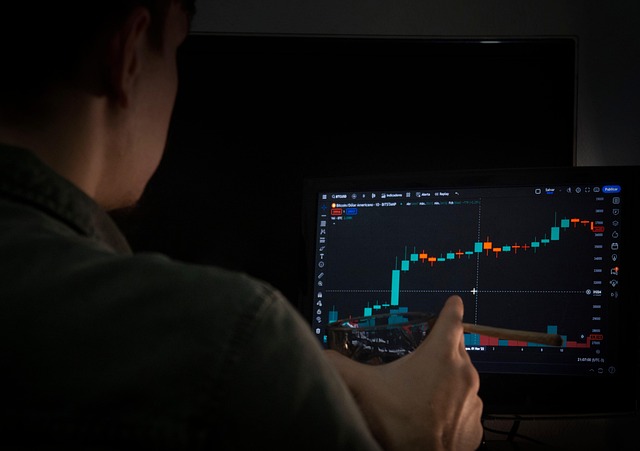Intro: Why This Comparison Matters
The crypto market doesn’t sit still. It spikes, dives, and mutates faster than traditional markets, making it both thrilling and unforgiving. That volatility is exactly why it attracts two distinct camps of investors: long-term believers and short-term traders.
Long-term holders buy into a vision. They pick assets with solid fundamentals—think Bitcoin or Ethereum—and hold through storms, looking toward large-scale adoption or tech developments as their payoff.
Short-term traders, on the other hand, live for momentum. They watch charts, time their entries and exits, and capitalize on news shocks or market sentiment shifts. It’s more hands-on and risk-heavy, but offers quicker wins—if you time it right.
Knowing the strengths and pitfalls of each mindset is step one to building a strategy that doesn’t just survive the chaos—but grows from it. Whether you lean toward patience or precision, the key is picking an approach that works for your goals, risk tolerance, and schedule.
What Is a Long-Term Crypto Investment?
Long-term crypto investing is simple on paper: buy and hold. Investors take positions in assets like Bitcoin, Ethereum, or promising Layer 1 altcoins, planning to hold for months or even years. This strategy isn’t about chasing daily trends—it’s about placing bets on the long-term potential of blockchain technology and giving projects time to mature.
The appeal? Less screen time, fewer reactionary trades, and a shot at riding entire bull market cycles. Holding through volatility means you’re not constantly stressed by short-term dips. Plus, fewer trades often translate into lower fees and fewer taxable events.
But it’s not all smooth sailing. Capital gets tied up, sometimes during long downturns. And you’ll need thick skin to ignore the noise when prices tank or a flashy new token starts pumping. Long-term investing demands conviction in the fundamentals and patience to see the bigger picture.
This route works best for those who believe in crypto at a macro level—and aren’t interested in micromanaging every market move.
What Is a Short-Term Crypto Investment?
Short-term crypto investing is all about agility. You’re buying and selling within hours, days, or weeks—not years. This style of trading is driven by technical analysis, news cycles, and sheer market momentum. It’s less about belief in a coin’s long-term future and more about its near-term potential. Most short-term traders focus on altcoins and micro-cap tokens because they move faster and offer bigger percentage swings, both up and down.
Pros
- Fast access to profits. If you time it right, gains can rack up quickly—sometimes in a matter of hours.
- Flexibility. This model lets you pivot with the market, making real-time decisions based on data and trends.
- Leverages hype before it fades. Whether it’s breaking news or a viral tweet, short-term traders ride the wave—then exit.
Cons
- High volatility. These markets are wild and unforgiving. One bad trade can wipe out several good ones.
- Demands time and discipline. You have to stay plugged in. Charts, signals, news feeds—you live in them.
- Costs add up. Between trading fees and potential tax hits, frequent transactions can eat into your profits fast.
Short-term crypto trading isn’t for the faint of heart, but for those who thrive on movement and decision-making, it’s a space that rewards speed, smarts, and relentless focus.
Choosing What’s Right for You
Before you dive headfirst into any investment style, ask yourself two things: how much risk can you handle, and how much time are you willing to commit? If you’re someone who checks prices compulsively and stresses over every dip, long-term holding might save your sanity. If you thrive in fast-moving environments and have hours to study charts or chase swings, short-term trading may fit your makeup.
The truth is, many investors do both. Hybrid strategies are becoming more common—think holding Bitcoin and Ethereum for the long game, while trading newer altcoins on the side for quick wins. This approach lets you build a stable foundation while staying opportunistic in the short term.
To make it work, you’ll want the right tools. Portfolio trackers like CoinStats or Delta help manage long-term positions. For short-term trades, platforms like TradingView, CoinMarketCal, and crypto-focused Discord groups offer real-time insights. Automated alerts, stop-loss tools, and secure exchanges with low latency all matter.
No matter your approach, the goal is the same: make decisions you can live with, even when the market goes sideways. Dig deeper into reducing your downside in this related piece: How to Minimize Risk in Cryptocurrency Investing.
Final Thoughts
There’s no one-size-fits-all path in crypto. Some investors thrive on quick, tactical moves; others are quietly stacking for the long haul. Neither is wrong. What matters is knowing who you are, what you’re aiming for, and how much risk you can actually stomach.
Long-term investors are playing the marathon, focusing on big-picture growth and macro trends. If you’re in it to build generational wealth—slow and steady can work, with time and patience on your side. On the other hand, short-term trading builds a different muscle: quick decision-making, discipline under pressure, and the ability to pivot fast. It’s a training ground, especially for those who want to stay sharp in the fast-moving world of crypto.
Whichever direction you lean, the foundation stays the same: educate yourself, manage risk, and resist the urge to follow hype. Stick to a plan, check your emotions, and always remember why you got in. The best investors aren’t just the most profitable—they’re the most self-aware.

 Head of Research & Blockchain Insights
Head of Research & Blockchain Insights
